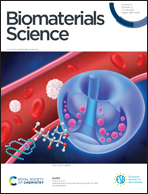Influence of high-pressure torsion deformation on the corrosion behaviour of a bioresorbable Mg-based alloy studied by positron annihilation
Abstract
The effect of high-pressure torsion (HPT) on the corrosion behavior of extruded ZX00 (Mg–0.45wt%Zn–0.45wt%Ca) in phosphate buffered saline solution is investigated. MgCaZn alloys are promising candidates for the use as bioresorbable implant materials and, therefore, are in the focus of current research. To improve their strength, severe plastic deformation, e.g. via the technique of HPT, can be used. Positron lifetime spectroscopy (PLS) is applied as sensitive tool for studying open-volume defects which evolve during HPT processing and subsequent corrosion. The studies were complemented by electrochemical impedance spectroscopy (EIS). In the uncorroded state, grain boundaries are the major type of positron trap as quantitatively analysed by means of diffusion-reaction models for positron trapping and annihilation in fine-grained alloys. Upon corrosion, positronium formation and annihilation indicate larger open-volume structures, such as pores and cracks, in the emerging corrosion product and oxide layers. Both PLS and EIS clearly show that HPT-deformation strongly reduces the resistance against corrosion. Evidence is found for corrosion-induced open-volume defects, presumably related to hydrogen, in deeper parts of the material below the corrosion layer.



 Please wait while we load your content...
Please wait while we load your content...